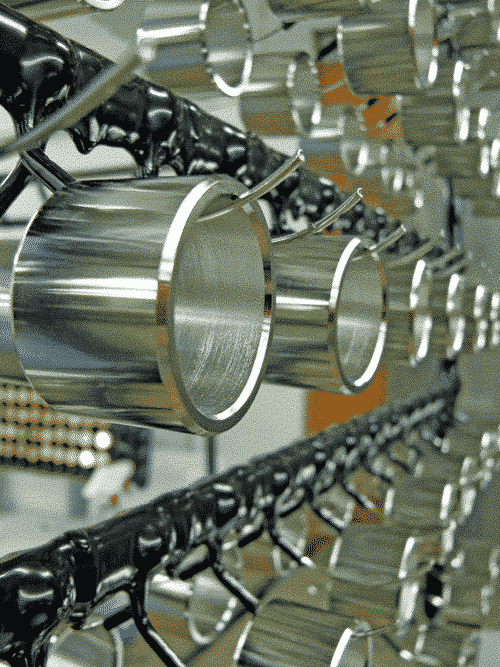In the last article, we have introduced different plating techniques in the post-processing for 3D printing, like electroless plating, electroplating, and PVD. Indeed there is another classification of plating, which is based on how we place the parts.
Barrel plating can effectively get a high volume of small metal objects plated in a barrel-shaped cage. There should be holes on the barrel so that the chemical solution can sufficiently exchange, and the barrel must be a turnover device for the inner parts’ rotation.
It’s not suitable for most 3D printed parts because of the complex geometry and hollow structure. The parts processed by the barrel plating method are prone to be damaged like scratching or denting during rotation.
You may ask: are the flat parts more suitable for barrel plating as they will not heavily crash into each other? Yes, the flat parts do not crash but usually stick together, ultimately leads to missing plating or uneven plating thickness.
Apart from the flat parts, some parts with irregular shapes will also be nesting into each other during barrel plating as they have a special structure.

The more often used plating method is rack plating. It’s suitable for delicate and larger parts without the possibility of damage. We hang the parts on a metallic fixture which supplies the galvanic cell circuit necessary for the electroplating process. There are wires, pins, and screws on the fixtures to keep the parts from the collision, and the tools also enable us for selection or partial coating.
However, there is a big issue of rack plating which is also driven by the tools on the fixture. The direct connection point between the tool and part is impossible to be plated. That is, there is always a hole or a zone not plated of the parts. No matter you adopt PVD or electroplating, the missing point is also there.

Is there any solution for this problem? Facfox has discussed it with many experienced technicians, and the answer is NO. To control the thickness of the plating layer, we cannot make secondary plating. The UV coating covered on the plated part is also not applicable for secondary plating.
Can we paint on the missing point of the part? Yes, but painting cannot create a mirror-like surface as plating does. In a word, plating is a wholistic process and cannot be done stage by stage. Maybe we’d better hide the fixed point tactfully.
